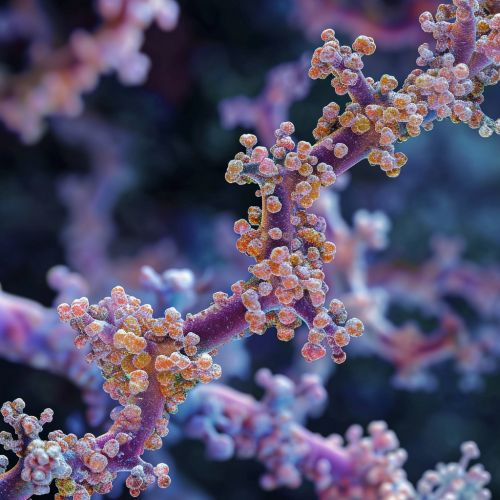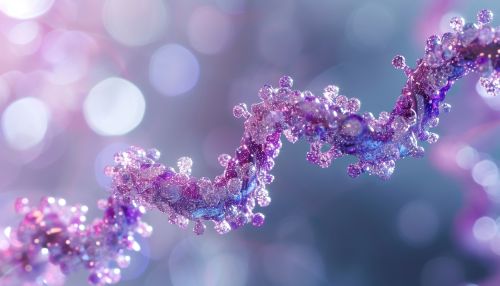NOS
Overview
Nitric oxide synthases (NOS) are a family of enzymes that catalyze the production of nitric oxide (NO) from L-arginine. NO is an important cellular signaling molecule, involved in various physiological and pathological processes. There are three known types of NOS: neuronal NOS (nNOS or NOS1), inducible NOS (iNOS or NOS2), and endothelial NOS (eNOS or NOS3).


Structure and Mechanism
All NOS isoforms contain a C-terminal reductase domain and an N-terminal oxygenase domain. The oxygenase domain is responsible for the synthesis of NO, while the reductase domain transfers electrons from NADPH to the oxygenase domain. The two domains are connected by a calmodulin-binding sequence. The oxygenase domain contains a heme prosthetic group, a tetrahydrobiopterin (BH4) cofactor, and a binding site for L-arginine. The reductase domain contains binding sites for NADPH, FAD, and FMN.
The mechanism of NO synthesis involves the oxidation of L-arginine to L-citrulline and NO. This reaction requires the transfer of electrons from NADPH, via the reductase domain, to the oxygenase domain. The reaction also requires the presence of BH4 and molecular oxygen.
Types of NOS
Neuronal NOS (nNOS or NOS1)
nNOS is primarily found in neuronal tissue, but it is also present in other cell types. It is involved in the regulation of neurotransmitter release, synaptic plasticity, and neural development. Abnormal nNOS activity has been implicated in various neurological disorders, including stroke, Alzheimer's, and Parkinson's.
Inducible NOS (iNOS or NOS2)
iNOS is expressed in a variety of cell types in response to inflammatory stimuli, such as cytokines or bacterial lipopolysaccharides. It produces large amounts of NO as part of the body's immune response. Overproduction of NO by iNOS can lead to tissue damage and has been implicated in various inflammatory and autoimmune diseases.
Endothelial NOS (eNOS or NOS3)
eNOS is primarily found in the endothelial cells that line the interior surface of blood vessels. It plays a key role in the regulation of vascular tone by producing NO, which induces relaxation of the smooth muscle cells in the vessel wall. Impaired eNOS activity is associated with various cardiovascular diseases, including hypertension, atherosclerosis, and coronary artery disease.
Clinical Significance
Given the crucial role of NOS enzymes in various physiological and pathological processes, they have been the focus of numerous studies for therapeutic intervention. Inhibitors of NOS, particularly iNOS, are being explored for the treatment of inflammatory and autoimmune diseases. On the other hand, activators of eNOS are being investigated for the treatment of cardiovascular diseases.
